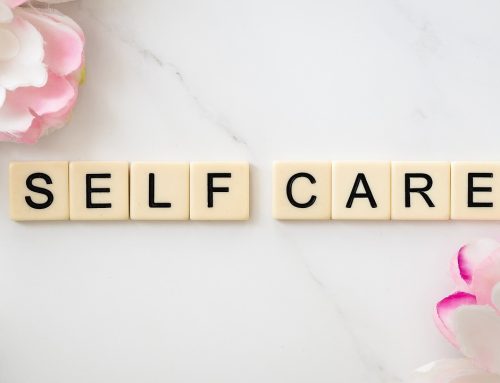
Who is affected
US General Stats:
- 1 in 25 adults are currently diagnosed with a serious mental illness; 1 in 5 are currently diagnosed with some sort mental illness
- There are a wide variety of anxiety disorders, including Post-Traumatic Stress Disorder, Obsessive-Compulsive Disorder, and specific phobias to name a few. Collectively they are among the most common mental disorders experienced by Americans.
- Approximately 10.2 million adults in the U.S. have co-occurring mental health and addiction disorders.
- Serious mental health illnesses cost people $193.2 billion in lost earnings every year in the U.S.
- Nearly 60% of adults with a mental illness did not receive care in the previous year.
Men:
- 3% are currently diagnosed with a serious mental illness; 14.3% are currently diagnosed with some sort mental illness.
- Men die from suicide at twice the rate as women.
- 6 milling men are affected by depression per year in the U.S.
- The Top 5 major mental health problems affecting men in the U.S. include Depression, Anxiety, Bipolar Disorder, Psychosis and Schizophrenia, and Eating Disorders.
- Men are significantly less likely to seek help for mental health issues than women. Causes for this include reluctance to talk, social norms, and downplaying symptoms.
Women:
- 5% are currently diagnosed with a serious mental illness; 21.2% are currently diagnosed with some sort mental illness.
- 12 million women in the U.S. experience clinical depression each year. Roughly twice the rate of men.
- Although men are more likely than women to die by suicide, women report attempting suicide approximately twice as often as men.
- Many factors in women may contribute to depression, such as developmental, reproductive, hormonal, genetic and other biological differences (e.g. premenstrual syndrome, childbirth, infertility, and menopause).
- Fewer than half of the women who experience clinical depression will ever seek care. And Depression in women is misdiagnosed approximately 30 to 50 percent of the time.
Kids:
- 50% of all chronic mental illness begins by the age of 14; 75% by the age of 24.
- 20% of 8 to 13 year of age in the U.S. will be diagnosed with some sort of mental illness in their lifetime.
- Girls 14-18 years of age have consistently higher rates of depression than boys in this age group.
- Nearly 50% of kids with a mental illness did not receive care in the previous year.
- LGBTQ adolescents are twice as likely to attempt suicide than non-LGBTQ youths.
- More than 90% of children who die by suicide have a mental health condition.
Sources: click the links for more stats and infographics.
- National Alliance on Mental Health: https://goo.gl/XuFb82
- Mental Health America: https://goo.gl/vXcKkM
How many are seeking care?
The short answer to this one is “not enough.” A recent report from SAMHSA (Substance Abuse and Mental Health Administration) state that only 1 in 5 adults with a mental illness are receiving treatment. This statistic combined with an uncertain future for Medicare and mental health funding means that employers are often the only path to access help for those in need through health insurance benefits, employee assistance programs, and wellness programs. These alarming statistics also bring to light how common it is for these issues to affect the workforce, and simultaneously its productivity. So, whether someone is directly suffering from a mental health issue or not, this is a problem that affects every last person in one way or another.
Why we do what we do
If you found the above statistics surprising, you must be new to the mental health conversation because these are nothing new. Mental health is an area that struggles to retain consistent support and funding from public and private sources. Mental health programs, care providers, facilities, non-profit organizations, and even programs like MINES’ Employee Assistance Program have to constantly justify themselves and (re)prove the value it what they/we do. A combination of the invisible nature of many mental health conditions and the stigma behind talking about these issues and seeking care makes it difficult to see just how pervasive of a problem these are in the US as well as the much of the rest of the world. In some areas of the world, mental health disorders can land you in jail or worse. It is not a “sexy” topic so the media only really rallies around the topic when something happens like a mass shooting, celebrity rehab incident, or some other sensation worthy event. This is a tragedy in and of itself because if we as a nation could just remain committed to improving the support system, communication, and available resources around mental health, so much of this loss of life could be prevented. This is why we, MINES and every other care provider, organization, and individual fights this all too silent war every day.
The relationship between mental health and substance abuse
This month is also about a very closely related issue to mental health, substance abuse. A large percentage of people with mental health disorders also experience issues with substance abuse, and vise versa. In fact, according to a SAMSHA study, nearly 27% of people with a mental health disorder use illicit drugs, which is over twice as much as the rate of the general population. And of the approximately 8.7 million people that suffer from both mental health issues and substance abuse, only about 7% receive treatment for both issues and a staggering 56% don’t receive treatment for either issue at all. With these numbers, it’s easy to see that there is a huge correlation that links these devastating nationwide issues. Enter prevention week.
Prevention week
This year SAMHSA is spearheading Prevention Week, May 13-19, to help spread awareness of both mental health issues, as they do year around, as well as the prevailing substance use issues that are running rampant without any sign of slowing down. We encourage you to check out their site for more information on prevention week and to see how you can support them and your community in the fight. Check out these links for information on all of the above:
- More information: samhsa.gov/prevention-week/about
- Take the Prevention Challenge samhsa.gov/prevention-week/prevention-challenge
- See how you can help here: samhsa.gov/prevention-week/about/get-involved
Below is a list of other important resources that can help you if you or someone you care about is suffering from a mental health issue, depression, substance abuse, or if you just need someone to talk to. Many are free, community-based resources that won’t cost you anything but your time. And of course, as MINES and Associates provides Employee Assistance Programs, we encourage you to use one if your employer offers one. EAPs are a great free and confidential resource that can help you, and in many cases, your family/household members, get in touch with a counselor and start the journey to better mental wellbeing. EAPs can also help with a large variety of other work/life issues that may be affecting you like work/life balance, financial issues, fitness, nutrition, and more.
Resources
- Substance Abuse and Mental Health Services Administration Treatment Referral Helpline
- 1-800-662-HELP
- National Institute for Mental Health – nimh.nih.gov
- NAMI (National Alliance on Mental Illness) – nami.org
- Mental Health America – mentalhealthamerica.net
- Mental Health America of Colorado – www.mhacolorado.org/gethelp
- Anxiety and Depression Association of America – adaa.org
- Depression and Bipolar Support Alliance – dbsalliance.org
- National Suicide Prevention Lifeline – suicidepreventionlifeline.org
- 1-800-273-8255
- First Responder Crisis Text Line
- Text “Badge” to 741741
- Military/Veterans Crisis Line/Resources
- Online Chat: Visit website at www.veteranscrisisline.net
- Call: 1-800-273-8255 (press 1)
- Text: 838255
- National Action Alliance for Suicide Prevention – actionallianceforsuicideprevention.org
- United Way- unitedway.org/local/united-states/
SAMHSA
- Help and Treatment
- samhsa.gov/find-help
- Child mental health resources
- samhsa.gov/children/awareness-day/2018/resource-list-traumatic-stress
Going forward
What can we do going forward? Stay loud. Keep talking. Keep writing congress about mental issues that affect you and those you love. Don’t let them wait for there to be a tragic event before the issues get put on their desk. Continue to vote for people that believe in what we do and what needs to be done. Continue to support organizations that are making strides in the right direction. Continue to demand benefits from employers that do more than just the bare minimum to support our mental health. Change is possible but it going to take more than an awareness month. It’s going to take people, all of us, coming together and making this an issue that’s bigger than a month, an issue that cannot be ignored or scapegoated. So, take the rest of this month help spread awareness, and then use next month keep marching, keep shouting, and continue to come together to push change forward because no one is going to do it for us.
To your wellbeing,
Nic Mckane
The MINES Team











Leave A Comment